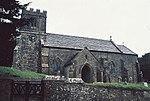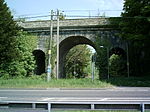Nunnery Mead
Dorset Wildlife Trust reservesVillas in Roman BritainWetlands of England
Nunnery Mead is a nature reserve of the Dorset Wildlife Trust, near Frampton and about 2 miles south-east of Maiden Newton, in Dorset, England. It is a former water-meadow, next to the River Frome. The reserve also contains the site of a Roman villa.
Excerpt from the Wikipedia article Nunnery Mead (License: CC BY-SA 3.0, Authors).Nunnery Mead
Dorchester Road,
Geographical coordinates (GPS) Address Nearby Places Show on map
Geographical coordinates (GPS)
| Latitude | Longitude |
|---|---|
| N 50.756944444444 ° | E -2.5472222222222 ° |
Address
Dorchester Road
Dorchester Road
DT2 0AY , Maiden Newton
England, United Kingdom
Open on Google Maps








